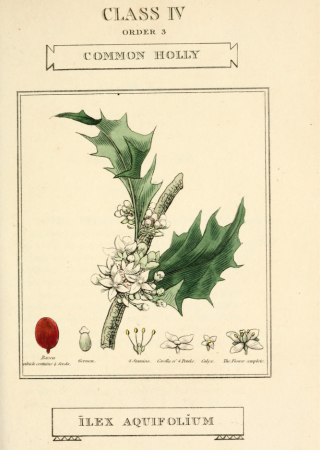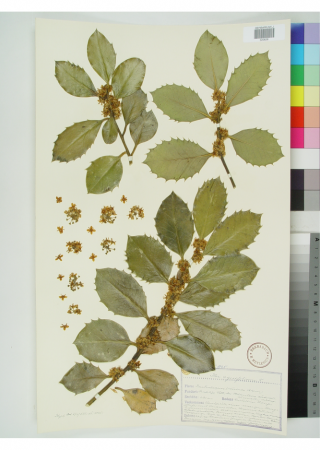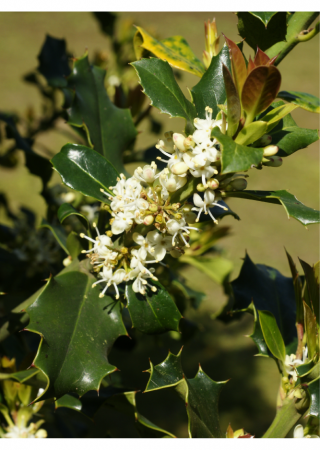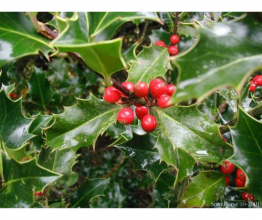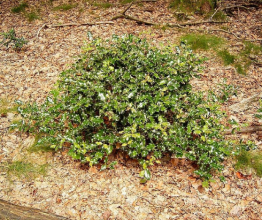Christmas/Common holly
- ...Romans, when celebrating the solstice, sent holly twigs to their friends as a sign of their favor?
- ...christian folklore states that holly thorns represent Christ's crown of thorns, and the red berries his blood?
- ...according to legend, the Czech king Chares IV acquired one of the thorns from Christ's crown, and had it inserted into his own St. Wencelas crown?
- ...holly in the wild can reach ages of up to 300 years, and grows very slowly, so that centuries-old trees may have trunk diameters of only 50 cm?
- ...holly was revered by Celts, Romans and Germans as a symbol of eternal life?
- ...tradition states that a sprig of holly placed inside the entry-way doorframe guards the home against lightning strikes?
Basic information:
Division – angiosperms (Magnoliophyta)
Class – eudicots (Rosopsida)
Maximum height – 15 m
Distribution – Europe, northern Africa, near east
Type of poison – alkaloids, saponins and terpenoids
Distinguishing marks:
Christmas holly is a robust shrub to small tree, reaching up to fifteen meters. Notable are its evergreen leaves with prickly edges and distinctly dark green upper surface. Flowers are tiny and white, pods are red berries.
Christmas holly is one of the symbols of Christmas. It captures our attention with its prickly, waxy leaves and later, its bright red berries. Its home is western, central and southern Europe, northern Africa, Asia Minor and northern Iran. It is often planted as a decorative shrub in parks. From May through June it blooms with tiny white flowers. In the fall, these give rise to small red berries. The plant contains the alkaloid theobromine, as well as other substances like saponins and terpenoids.
Cases of poisoning occur mainly in children, from consuming the bright red berries. Symptoms are nausea, strong diarrhea and sleepiness. Initial symptoms can occur in children with the consumption of as few as two berries. A fatal dose for an adult is considered to be 20-30 berries. However, newer research suggests that even larger doses cause only vomiting and diarrhea.

